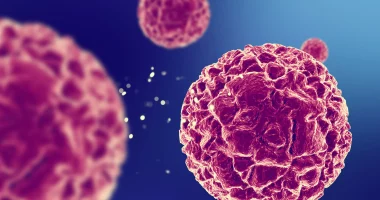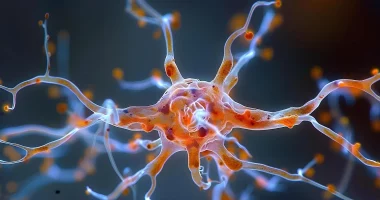Chronic granulomatous disease is an uncommon genetic disorder that weakens the immune system, making it hard for the body to fight off certain infections. Specifically, CGD affects a kind of cells of white blood called phagocytes, which are essential for protecting the body against harmful bacteria and fungi.
In individuals with CGD, these phagocytes can’t function properly, which leads to a higher risk of serious and repeated infections. These infections can be more severe and last longer than usual. Additionally, CGD can cause chronic inflammation, where the body’s immune response stays active for a long time, even when there’s no infection. This ongoing inflammation can lead to the formation of granulomas, which are groups of cells of white blood that build up in tissues and organs, giving the disease its name.
Symptoms
CGD is characterized by several key features. First, individuals with CGD have phagocytes that are unable to kill specific kinds of fungi and bacteria, which leads to frequent and severe infections. Another hallmark of CGD is the formation of granulomas, which are clusters of immune cells that build up in tissues as the body tries to isolate and contain these infections. Additionally, people with CGD often experience chronic inflammation, even when there is no active infection present. This persistent inflammation can cause various complications throughout the body.
CGD can affect any organ or tissue, but infections most commonly occur in specific areas. The skin, lymph nodes, lungs, liver, and bones are particularly vulnerable to infection in individuals with CGD. In some cases, the brain may also be affected. These infections and the accompanying inflammation can lead to significant health challenges for those living with the condition.
Causes and Risk Factors
Chronic granulomatous disease is typically caused by a mutation in 1 of 5 genes. They are crucial because they produce subunits of an enzyme complex called NADPH oxidase, which plays an important role in the immune response. Phagocytes, a type of immune cell, rely on NADPH oxidase to produce superoxide, a molecule that helps kill harmful bacteria and fungi, preventing them from increasing and leading to infections.
When any of these subunit proteins are missing or altered, NADPH oxidase cannot function or assemble correctly. Without this enzyme, phagocytes lose their ability to effectively kill certain fungi and bacteria, leaving the body vulnerable to infections. Besides fighting pathogens, NADPH oxidase also helps regulate the activity of neutrophils, another type of immune cell. Neutrophils are important for managing inflammation and aiding in tissue repair. Without NADPH oxidase, the body may experience excessive inflammation, leading to complications.
CGD is an inherited condition that exists from birth, caused by variations in some of the following 5 genes: NCF4, NCF2, NCF1, CYBB, and CYBA. The inheritance pattern of Chronic Granulomatous Disease is typically either autosomal recessive or X-linked recessive, leading to two kinds of the disease.
As a genetic disorder, the primary risk factor for CGD is having a parent who either has the condition or carries a gene variation. CGD makes individuals particularly susceptible to infections, commonly caused by pathogens such as Aspergillus species, Staphylococcus aureus, Serratia marcescens, Nocardia species, and Burkholderia cepacia.
Diagnosis
Diagnosing CGD involves a multifaceted approach that starts with a comprehensive clinical evaluation and a detailed medical history to identify any signs indicative of the condition. To assess the immune system’s functionality, especially that of neutrophils—critical white blood cells—a series of specialized tests are conducted. Neutrophil function tests evaluate how effectively these cells combat pathogens. Additionally, the dihydrorhodamine reduction examination and the nitroblue tetrazolium slide examination are employed to measure the production of oxidants by neutrophils, substances essential for killing fungi and bacteria.
If these assessments suggest the presence of CGD, genetic testing is recommended as a confirmatory step. This genetic screening aims to identify specific mutations in genes associated with CGD, thereby determining the exact subtype of the disease. Knowing the specific genetic alteration not only confirms the diagnosis but also guides treatment decisions and provides valuable information for family planning and genetic counseling.
Treatment
Managing Chronic Granulomatous Disease usually involves persistent antibiotic therapy to prevent fungal and bacterial infections. When infections do occur, they usually need other antibiotics and an extensive treatment period to be effective. In some cases, healthcare providers may also prescribe corticosteroids to reduce inflammation and alleviate symptoms. For more severe cases, a bone marrow transplant might be considered as it can offer a potential cure by replacing defective immune cells with healthy ones.
Another treatment option is Actimmune, a protein that can enhance the activity of phagocytes, the immune cells that are compromised in CGD. By boosting phagocyte function, Actimmune may help decrease the frequency and severity of infections. Studies are also exploring gene therapy as a future treatment, aiming to correct the genetic mutations responsible for CGD at their source.
Preventative measures are crucial for people with CGD to minimize the risk of infections. This includes avoiding activities that expose them to bacteria and fungi, such as swimming in salt or freshwater, handling garden mulch, turning compost piles, cleaning cellars, repotting plants, and participating in hayrides.
Additionally, for those planning a family, genetic counseling is recommended. This can provide valuable insights into the risks of passing CGD on to children and help with informed decision-making regarding family planning.
Prognosis
People with Chronic Granulomatous Disease may have a shorter life expectancy compared to those without the condition, mainly due to the frequent infections and ongoing inflammation that CGD causes. However, there is good news. A review in 2017 shows that the life expectancy of individuals with CGD has improved significantly, increasing more than three times over the past few decades. This improvement is largely thanks to better awareness of the disease, earlier diagnosis, and advancements in medical treatments that help manage the complications and symptoms more effectively. Today, with proper care and treatment, many people with CGD are living longer, healthier lives than ever before.
Summary
Chronic granulomatous disease is an uncommon genetic disorder that weakens the immune system, making individuals prone to severe fungal and bacterial infections. It is caused by alterations in genes responsible for the NADPH oxidase enzyme, which is crucial for immune cell function. Diagnosing CGD involves specialized tests and genetic screening, while treatment includes continuous antibiotic therapy, Actimmune, corticosteroids, and possibly bone marrow transplants. Preventative measures are also important to avoid infections. Although CGD can shorten life expectancy, advancements in treatment have significantly improved outcomes, allowing many with the condition to live longer, healthier lives.








